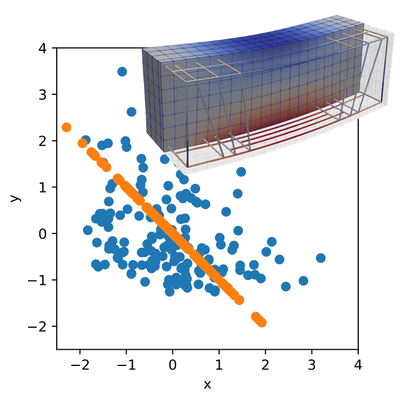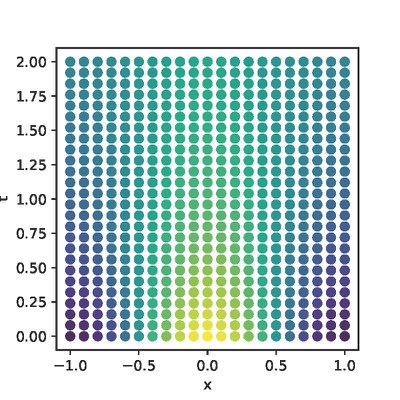Current research of our institute in this area focuses on novel methods for hybrid digital twins and physics-informed neural networks.
Hybrid Digital Twins
The analysis, control and optimization of complex technical systems, such as components of our critical infrastructure, require an intimate interplay of physics-based modeling and simulation (e.g. FEM) as well as data-based techniques (e.g. ML) harvesting available sensor information. At IMCS, we aim at advancing a new research paradigm denoted as "hybrid digital twinning", which exploits the benefits of both classical modeling and simulation as well as engineering data. In doing so, the obvious limitations of physics-based modeling and simulation (e.g. model complexity, computational costs) and classical machine learning (e.g. data scarcity, sensor placement) can be overcome to achieve the "best of two worlds". The focus of our current research is on developing hybrid digital twins for critical infrastructure (e.g. bridges, water networks) within the dtec.bw project RISK.twin that is led by IMCS. Methodically, we enrich our long-standing expertise in modeling and simulation with model reduction techniques, data-driven simulation and (physics-informed) machine learning to offer an integrated software solution to variouos stakeholders concerned with critical infrastructure, such as public authorities and organizations with security tasks, energy suppliers and the transport sector.
Contacts at IMCS
Publication
-
von Danwitz M, Kochmann T, Sahin T, Wimmer J, Braml T, Popp A (2023): Hybrid Digital Twins:
A Proof of Concept for Reinforced Concrete Beams. Proceedings in Applied Mathematics and Mechanics, 22(1): e202200146, DOI (Open Access)
Current Projects
Physics-Informed Neural Networks
Physics-informed neural networks (PINNs) can be used to approximate the solution of a partial differential equation. Thus, PINNs are an alternative to classical mesh-based methods such as finite differences or finite elements (FEM).
Besides this forward problem, PINNs can also solve inverse problems. For example, unknown model parameters can be identified by combining available data with the mathematical model of the physical problem in the objective function of the neural network.
The research area is established within the dtec.bw project RISK.twin.

